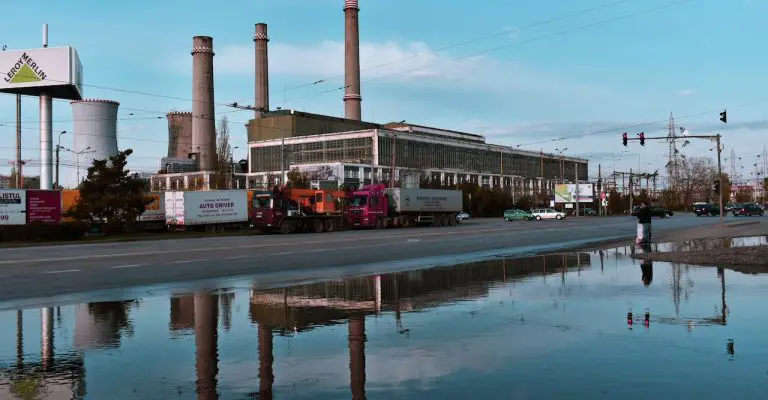–
What is Welfare Capitalism?
Welfare and capitalism are firmly entwined both as historical peculiarities and as analytical ideas. The dispersion of capitalism, in light of industrial production and product utilization, annihilates the conventional local area and connection support average of agrarian social orders, thus inclining toward the initiation of new types of social regulation that lead to the improvement of the welfare state.
Welfare capitalism is capitalism that incorporates thorough comprehensive social welfare policies. Welfare capitalism is likewise the practice of organizations giving welfare assistance to their workers. A welfare state assists people by offering the minimum wage pay, short work days, limitations on working ages, and joblessness benefits. Welfare capitalism in this subsequent sense, or industrial paternalism, was focused on ventures that employed skilled workers and crested during the twentieth century. At times welfare capitalism exists inside a blended economy, yet welfare states can and do exist autonomously of strategies normal to blended economies like state interventionism and broad regulation.


Welfare capitalism alludes to two hypothetical points of view on social change in industrializing countries. From one viewpoint, the possibility of welfare capitalism is emphatically implanted in the critical interpretations of the questionable effect of capitalism and commodification on the social insurance and prosperity of residents. This approach focuses to the way that the dispersion of capitalism makes a shortfall of social insurance given by welfare policies.
Then from other view point, welfare capitalism is at the focal point of the field of study that has attempted to make sense of the enhanced elements of the welfare state in various national contexts and the social and historical assortment of welfare frameworks.
History
In the nineteenth century, a few organizations – mostly manufacturers – started offering new advantages for their workers. This started in England in the mid nineteenth century and furthermore happened in other European nations, including France and Germany. These organizations supported sports teams, laid out social clubs, and gave educational and social activities to workers and some of them also offered housing schemes as well. Welfare corporatism in the US created during the extreme industrial development of 1880 to 1900 which was set apart by work disputes and strikes, numerous violent.
One of the very first efforts to offer humanitarian welfare to laborers was made at the New Lanark mills in Scotland by the social reformer Robert Owen. He became director and part owner of the mills in 1810, and empowered by his outcome in the administration of cotton factories in Manchester. The general state of individuals was extremely inadmissible. He hoped to direct New Lanark on higher principles and spotlight less on making business benefit.

Owen opened a store where individuals could purchase merchandise of good quality at almost wholesale cost. He sold quality goods and passed on the reserve funds from the mass purchases of products to the workers. These standards turned into the reason for the cooperative stores in England that keep on working today.
In the early long years of the twentieth century, nonetheless, business pioneers started embracing an alternate approach. The Cadbury group of philanthropists and business entrepreneurs set up the model town at Bournville, Britain in 1879 for their chocolate making manufacturing plant. Hard working and dedicated workers were treated with extraordinary regard and moderately high wages and great working circumstances, Cadbury spearheaded pension plans, joint works committees and a full staff medical service.
In America in the mid twentieth century, businessmen like George F. Johnson and Henry B. Endicott started to look for new relations with their workers by offering the employees wage incentives and different advantages. The point was to increment efficiency by making good will with employees. At the point when Henry Ford presented his $5-a-day pay rate in 1914 at the time when most workers made $11 every week, his objective was to decrease turnover and fabricate a drawn out faithful workforce that would have higher productivity.
Conclusion
Most of the countries in world work under some type of welfare capitalism. The administrations of these countries hope to accommodate people through the reallocation of wealth brought about by corporate taxes. Organizations can contribute voluntarily by giving funds or services to their workers dependent upon the need basis. This permits the organization to ideally keep away from government law that makes a constrained welfare state on the economy. While participating in these voluntary activities, organizations can likewise put money into services that their laborers will see as generally important.
In the mid twentieth century, Welfare capitalism programs helped high class workers undeniably more than lower level workers. Basic wages for unskilled and low-skilled laborers filled minimal during the 1920s, while long working hours in dangerous circumstances kept on being the normal. Further, business insecurity because of cutbacks stayed a reality of work life. Welfare capitalism programs seldom filled in as expected, organization associations just supported that power of the executives over the terms of work.


I know this web page presents quality based articles or reviews and extra stuff, is there any other
website which offers these kinds of stuff in quality?
I’m curious to find out what blog system you happen to be working with?
I’m having some small security problems with my latest blog and I’d like to find something more safeguarded.
Do you have any recommendations?
certainly like your website however you have to test the spelling on several of your
posts. Several of them are rife with spelling issues and I to find it very troublesome to tell the truth on the other hand I will certainly come again again.